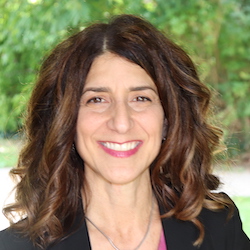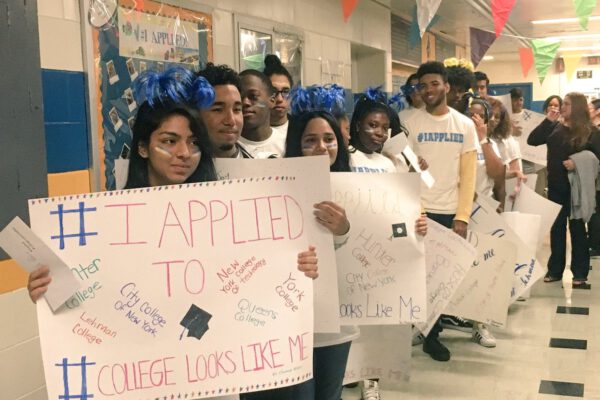By Lori Varlotta
Calls from the general public and elected officials for U.S. colleges and universities to develop more relevant curricula, pave the college-to-career pathway, and offer affordable degrees are growing in strength and number. At Hiram College, a liberal arts institution in Ohio, we have been implementing systemic changes in an effort to respond to these calls and do the right thing for our students and our institution.
Changes in progress: The New Liberal Arts
Hiram’s wide-ranging change process began in earnest when we rolled out our New Liberal Arts: Integrated Study, High Impact Experiences, Mindful Technology model in 2016–17. As the name suggests, we made curricular and co-curricular changes to prioritize these features of the student experience. And so far, they seem to be paying off for our most important stakeholders: the students.
- Two of the five recently added interdisciplinary majors—integrative exercise science and sport management—are the most highly subscribed programs the college offers.
- The campus-wide Tech and Trek program, which equips students with an iPad Pro, Apple Pencil, a suite of educational apps, workshops on mindful technology, and hiking boots, is generating positive student learning outcomes. According to quarterly surveys, students overwhelmingly feel that the technology “engages [them] in course material” and “helps [them] learn.”
- The high-impact experiences that are part of the New Liberal Arts are likely one of the reasons that 95 percent of Hiram graduates surveyed are employed or enrolled in graduate school six months after graduation.
Students are not the only ones taking notice of these changes. The timing correlates directly with the top standing that Hiram earned in the 2019 Washington Monthly College Guide and Rankings published two weeks ago. It placed Hiram fourth nationally among baccalaureate institutions that were evaluated across three equally weighted criteria: social mobility, research, and promoting public service.
Hiram has also fared exceptionally well in the latest U.S. News & World Report rankings: placing fifth among regional colleges in the Midwest for social mobility and sixth for Best Value among Midwest regional colleges.
Next phase of change: new tuition model
Now that the first round of changes is taking hold in ways that benefit students, the institution, and the public good, the leadership team at Hiram is working to implement the next major phase of our New Liberal Arts: a new tuition model we are calling “Learn More, Earn More, Spend Less.” The new model moves Hiram away from the common high-price/high-discount model that is failing to serve prospective students or the college well. The emerging model has been in a design phase for one full year given the implications we expect it to have for multiple stakeholders: the college itself, prospective students and families, returning students, and even the regional and national workforce.
The features of the model look like this:

How the tuition model benefits students
In a nutshell, the six concrete ways the model helps students learn more, earn more, and spend less are:
- Students can learn more by enrolling in courses year-round at no extra cost.
- Students can learn more by setting their own pace of study.
- Students can earn more money and more credits at the same time if they apply for and are granted one of our paid summer internships or research projects.
- Students will spend less on mandatory fees since we have eliminated them completely.
- Students will spend less on any summer courses they take going forward, as courses have cost about $2,000 each in recent years.
- Students may even spend less on overall tuition than they would at other private colleges. Our new tuition price ($24,500 before financial aid) makes us one of the best-priced four-year private colleges within and beyond Ohio.
Educational benefits
We have designed this model to provide free summer courses, and students can opt to enroll in two such courses each year from a host of offerings. This option will allow some to add a second major or a minor (at no extra cost and without prolonging their time to degree). It will allow others to take courses for personal enrichment—perhaps a subject that they wouldn’t take during a semester or one that allows them to skill up in an area outside their major.
This new summer format also means that students can accelerate or decelerate their studies as they see fit. Approximately 50 percent of Hiram students participate in our intercollegiate athletic programs, and some of them will occasionally benefit from taking one fewer course while their team is in season; now, they can do so. Each semester, we also have students who choose to undertake a labor-intensive research project. Taking four classes rather than five will give them the time they need to focus on that project.
Students in either group can now make up, at no additional cost, classes postponed in the semester during the summer, which will help them stay on track to graduate in four years. Those who wish to graduate in under four years and potentially save a semester’s or year’s worth of tuition can also do so. We imagine this option will be particularly popular with our College Credit Plus students who begin their Hiram education with college credits they earned in Ohio’s high school/college dual enrollment program.
Career advantage
When free summer is combined with paid summer internships, the model stands even further apart from any others we have researched.
Readers of this blog will not be surprised that the National Association of Colleges and Employers (NACE) confirms employers want to see work experience on candidates’ resumes, including those applying for entry-level positions. What might be a bit surprising, however, is the proportion of employers who look for such experience. Results from NACE’s most recent Job Outlook survey reveal that almost 91 percent of employers look to hire candidates who have had work experience, and more than half of them prefer that it comes from an internship or co-op.
Hiram’s new tuition model not only adds dozens of paid internships but placements that are closely aligned with majors and fields of study. These same internships aim to develop the four power skills—teamwork, problem solving, and oral and written communication—that employers state on NACE surveys as being critical in their college graduate screening.
Financial benefits
The published or gross price of tuition and mandatory fees at Hiram shrinks from $37,710 to $24,500, a 35 percent decrease. We are quick to explain, however, that given the institution’s discount rate, a returning student’s net or out-of-pocket costs for fall and spring semesters are unlikely to decrease because financial aid will be adjusted to align more closely with the new gross price. Importantly, however, we have also committed that no current student will be disadvantaged from this change.
Despite not paying less during the school year, the model still offers four financial benefits to students. One, should students take just one free summer course, they will save $2,000; if they take the maximum allowed over their college career, they could save more than $12,000 in real money. Two, the acceleration option available through this model makes it feasible for motivated students to shave off a semester or a year, saving thousands of dollars in the process and forgoing lost opportunity costs. Three, the stipend earned via summer internships puts real cash in students’ pockets or their college coffers. Finally, since tuition increases are based on a percentage increase over the current year’s tuition, any subsequent increase will be significantly less than it would have been had the gross tuition and fees stayed at $37,710.
Win-win for all
We have worked hard to make students the primary beneficiaries of our new tuition model. As president, though, I am sure that the other prime beneficiary is the college itself.
We have deliberately designed this new tuition model to attract and keep the attention of students who would likely dismiss Hiram out of hand if we maintained the high-price/high-discount model that is still the norm at colleges like ours. Time will tell if the new model increases our future enrollment as we anticipate.
Finally, the regional and national workforce benefits from this model because its internships help students develop the work ethic associated with a real-world job and the skills they need to thrive in a workforce that is changing at a historic pace.
For all of these reasons, Hiram is excited to lead the industry in rolling out a tuition model that addresses so much about what is broken in our current approach.
If you have any questions or comments about this blog post, please contact us.



